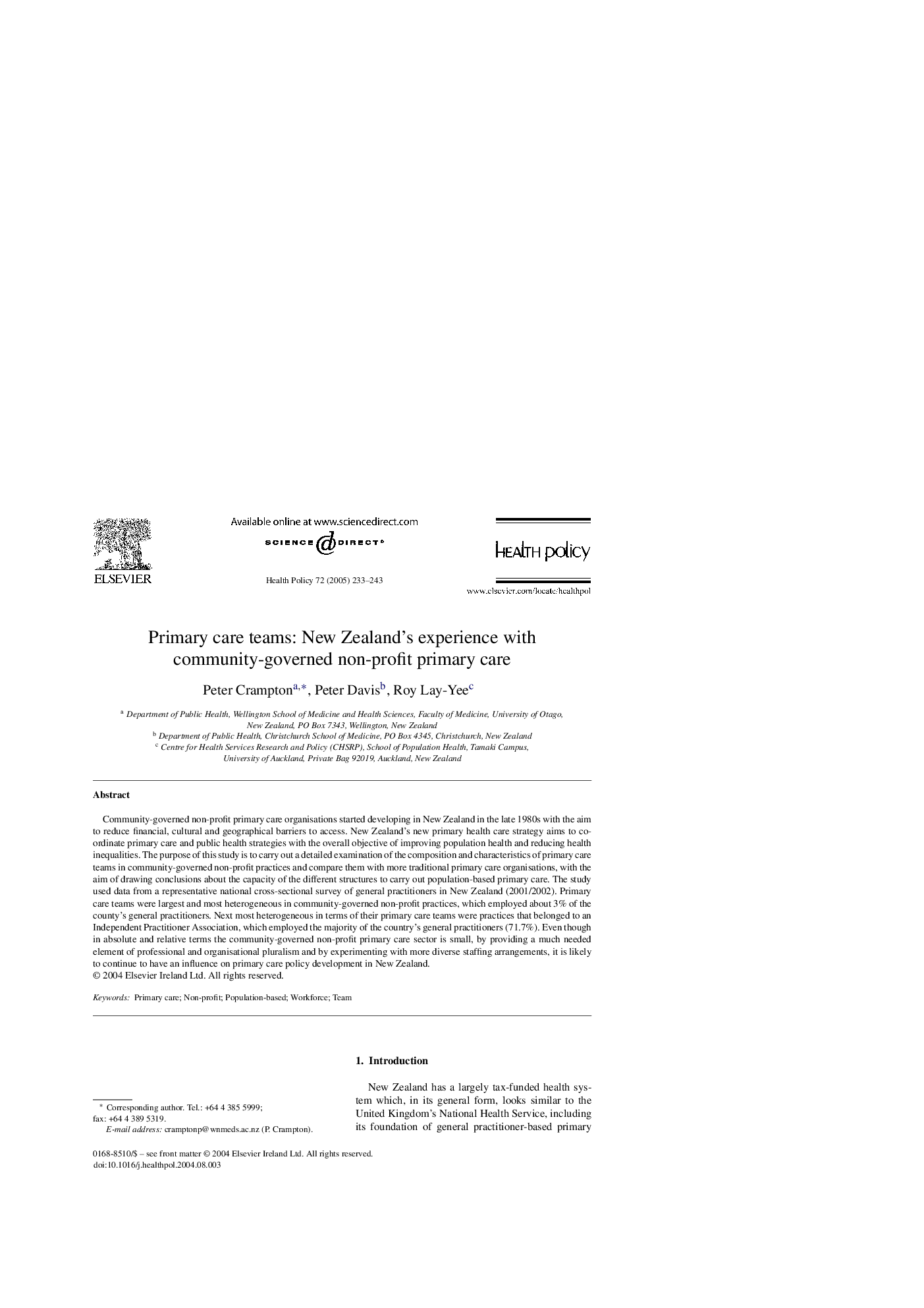| Article ID | Journal | Published Year | Pages | File Type |
|---|---|---|---|---|
| 9383025 | Health Policy | 2005 | 11 Pages |
Abstract
Community-governed non-profit primary care organisations started developing in New Zealand in the late 1980s with the aim to reduce financial, cultural and geographical barriers to access. New Zealand's new primary health care strategy aims to co-ordinate primary care and public health strategies with the overall objective of improving population health and reducing health inequalities. The purpose of this study is to carry out a detailed examination of the composition and characteristics of primary care teams in community-governed non-profit practices and compare them with more traditional primary care organisations, with the aim of drawing conclusions about the capacity of the different structures to carry out population-based primary care. The study used data from a representative national cross-sectional survey of general practitioners in New Zealand (2001/2002). Primary care teams were largest and most heterogeneous in community-governed non-profit practices, which employed about 3% of the county's general practitioners. Next most heterogeneous in terms of their primary care teams were practices that belonged to an Independent Practitioner Association, which employed the majority of the country's general practitioners (71.7%). Even though in absolute and relative terms the community-governed non-profit primary care sector is small, by providing a much needed element of professional and organisational pluralism and by experimenting with more diverse staffing arrangements, it is likely to continue to have an influence on primary care policy development in New Zealand.
Related Topics
Health Sciences
Medicine and Dentistry
Public Health and Health Policy
Authors
Peter Crampton, Peter Davis, Roy Lay-Yee,
